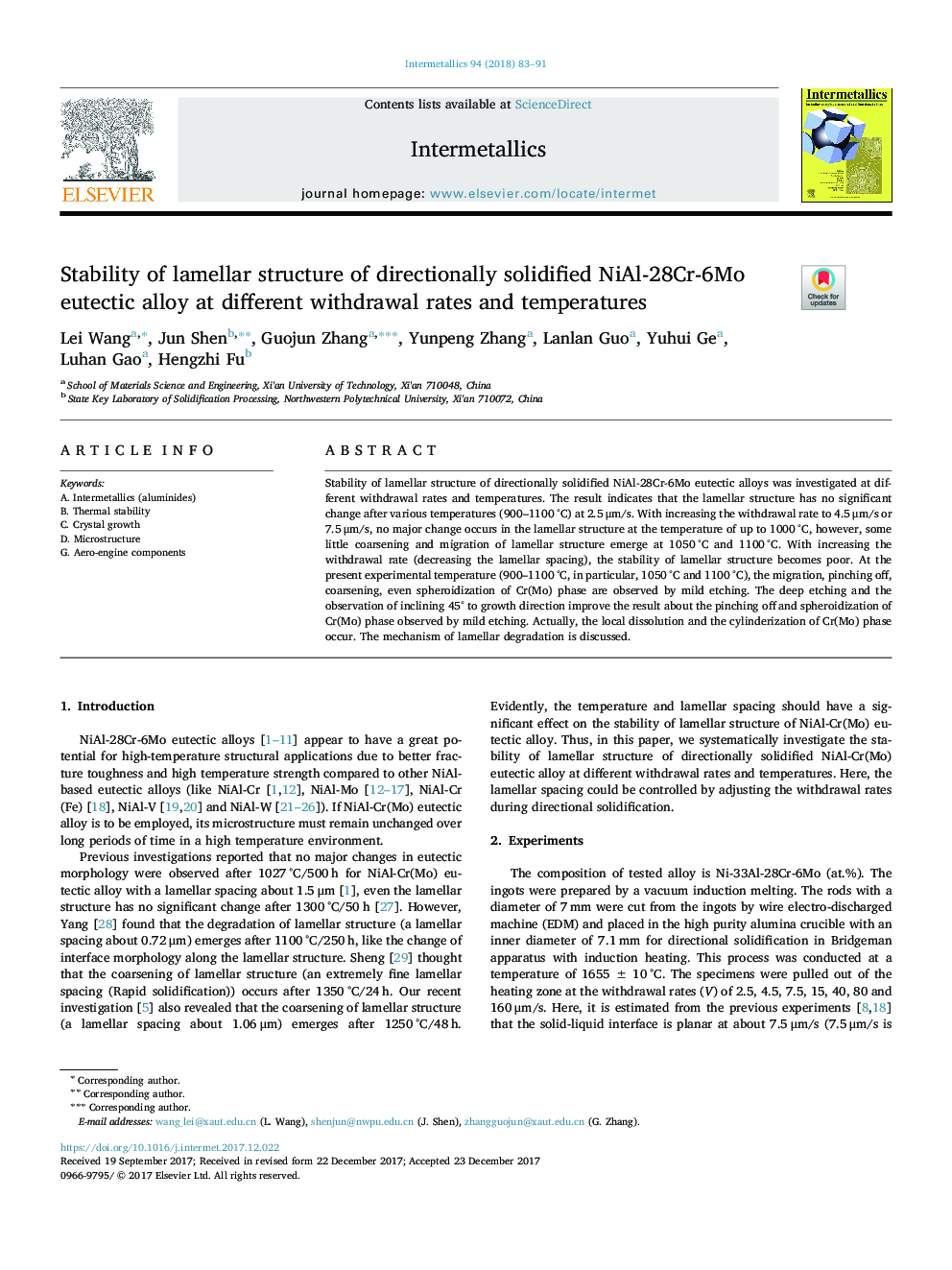| Article ID | Journal | Published Year | Pages | File Type |
|---|---|---|---|---|
| 7988371 | Intermetallics | 2018 | 9 Pages |
Abstract
Stability of lamellar structure of directionally solidified NiAl-28Cr-6Mo eutectic alloys was investigated at different withdrawal rates and temperatures. The result indicates that the lamellar structure has no significant change after various temperatures (900-1100â¯Â°C) at 2.5â¯Î¼m/s. With increasing the withdrawal rate to 4.5â¯Î¼m/s or 7.5â¯Î¼m/s, no major change occurs in the lamellar structure at the temperature of up to 1000â¯Â°C, however, some little coarsening and migration of lamellar structure emerge at 1050â¯Â°C and 1100â¯Â°C. With increasing the withdrawal rate (decreasing the lamellar spacing), the stability of lamellar structure becomes poor. At the present experimental temperature (900-1100â¯Â°C, in particular, 1050â¯Â°C and 1100â¯Â°C), the migration, pinching off, coarsening, even spheroidization of Cr(Mo) phase are observed by mild etching. The deep etching and the observation of inclining 45° to growth direction improve the result about the pinching off and spheroidization of Cr(Mo) phase observed by mild etching. Actually, the local dissolution and the cylinderization of Cr(Mo) phase occur. The mechanism of lamellar degradation is discussed.
Keywords
Related Topics
Physical Sciences and Engineering
Materials Science
Metals and Alloys
Authors
Lei Wang, Jun Shen, Guojun Zhang, Yunpeng Zhang, Lanlan Guo, Yuhui Ge, Luhan Gao, Hengzhi Fu,
